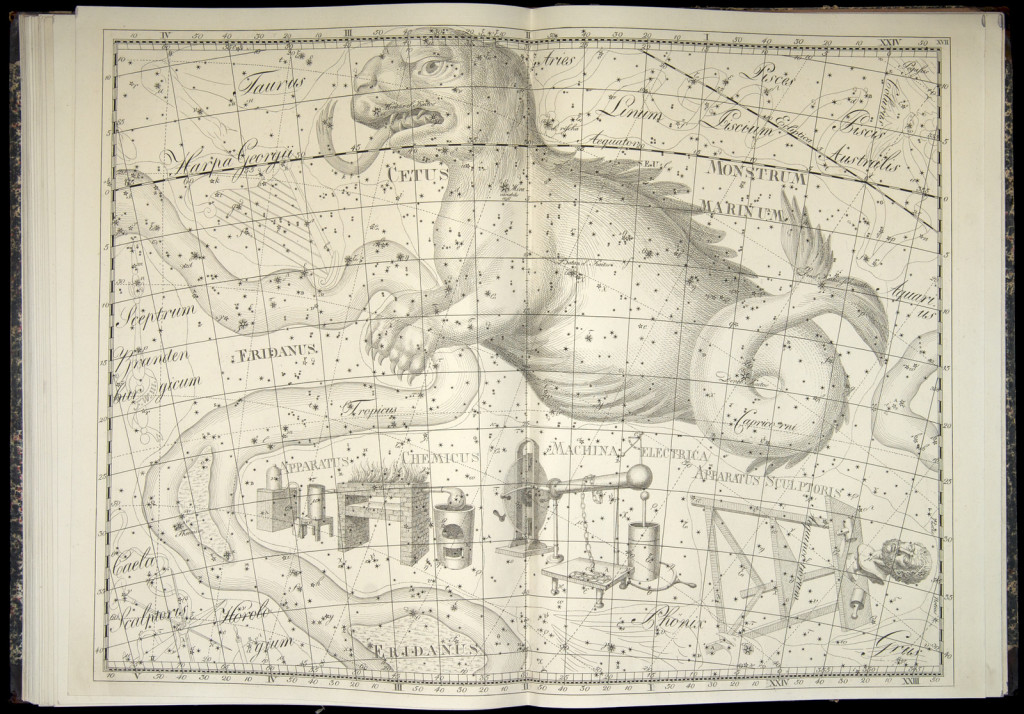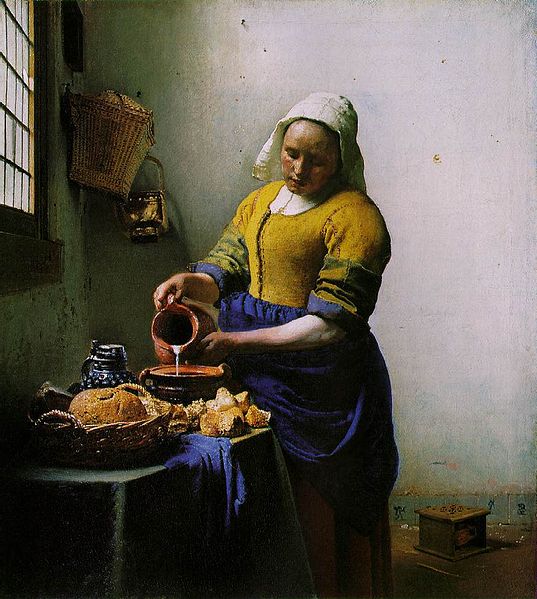For the ground beneath our feet. The slip of paper in my cookie tells me there is nothing down there: look up! As if there were anything of consequence above our heads! Unbroken blue, on a good day. Light too strong to look at. Clouds, which we imagine into shapes of things down here. Stars, which we imagine into shapes of things down here. Look up, indeed! We ought to look down in the first place: at the mosaic of stones, the softly shooting grass, the gentle riot of wildflowers, the skittering of beetles, the slithering of infant snakes, the ripples of a strider’s feet on a mud puddle. Look up? What do expect to see? God? But there’s God now, taking off his socks, sinking his toes into the the cool mud, sniffing the tiny golden flower atop the stalk that looks like grass, the one you didn’t even notice with your head in the clouds. It’s why he made the place, you know, so don’t go thinking you’re too good for it. Look down, friend! It’s where the action is.
Caeli errant
With apologies to the psalmist.
Each day tells its tale unto the next:
The sun in jaunty setting shouts its benediction to the sky
Like a TV talk show host leaving the stage.
One by one the sky announces stars
But the twinkling stars forget their lines, and the moon, old nag
Spends half the night in prompting. Insouciant satellites streak
Across the stage, and are removed. The audience
Doze, or check their phones. Before the dawn
The constellations are confused, and reel half-lit
About the murky void, Orion and the Pleiades
Doing God knows what together in the West. Now Venus,
Always eager, is up too early, and Jupiter demurely
Hides his face behind a cloud. The night grows pale
And imparts what knowledge it recalls—a whispered word,
The echo of a gesture. Something about the truth?
Not much remains. The day, in any case
Will not believe a word of it.
Obsolete constellations

The “Apparatus Sculptoris” constellation in Bode’s Uranographia (via University of Oklahoma History of Science Collections)
Allison Meier shares a look at Johann Elert Bode’s 1801 “Uranographia,” which shows constellations representing, among other things, a printing press and a sculptor’s stand with a partially sculpted head. Until the twentieth century, she notes, “space was a celestial free-for-fall,” with constellations imagined and named and charted willy-nilly. Then the International Astronomical Union, the same body that declared Pluto no longer a planet, designated 88 official constellations, and all the rest are now obsolete.
“It’s fascinating,” Meier concludes, “to gaze back at how our visual culture has long shaped how we perceive those distant luminosities.” Not many of us today, I think, would be likely to see a printing press in the sky, though I’m tempted to look for that sea monster. But the idea that a constellation can be obsolete seems at first blush a bit silly to me; none of them was ever real in the first place, and you either see it or you don’t. But then not many of us in the West see anything in the sky any longer. Now that astrological theories of human health have been thoroughly discredited we have less reason to care. In an era of red shifts and black holes we may lack the imagination. More important, for most of us the sky is too bright. Tonight I should be able to spot Orion, the Pleiades, and… that’s about it. The rest are too dim. Maybe all the constellations are obsolete.
With so few stars to work with, we can’t very easily invent our own constellations any longer, either, even if we were so inclined. I’ve always thought of the constellations as the sum of darkness and idleness. Imagining a bear or a crab, let alone a printing press, in the chaotic infinitude of stars takes time. You have to look at those random points of light, really look, not scanning or searching, without prejudice or purpose, until — delightfully — an image appears. But how many of us are willing to spend an hour or two just looking at anything, let alone a random smattering of light? Or even fifteen minutes? We live too fast, now, to see what isn’t there. That takes time we don’t think we have. Instead we have an international body to tell us what is there, and we Google it and move on. Even the idea of constellations may be obsolete, a relic of a past age — just like that printing press. We have other, faster things now.
Evening also breaks
Another cold morning, though not as cold as yesterday. The duck pond is free of ice, but barely; the surface ripples thickly as if it had thought to freeze but hadn’t quite made up its mind before the dawn broke. Now the sun filters weakly golden through the leafless crags of trees like a bit of tarnished jewelry, diffusing around the broken lines of branches, emphasizing their nakedness without clarifying their geometry. At least the world survived another long night. It usually does.
I have often felt that I could tell the difference between sunrise and sunset only by the light, but I have never been able to convince myself rationally that this is so. If I were stuck down in some unknown spot on the globe at one or the other time of day with no compass or geographic bearings and had to guess in an instant whether the sun was coming or going, could I? I think I could, but perhaps that’s only a conceit. The sun would appear the same distance above the horizon, its light falling at the same shallow angle, filtered through the same branches. I can’t think of any physical evidence of its movement without simply waiting to see what happened next.
Then again, a few of the Dutch masters seem to have been able to capture the difference without resorting even to painting the sky, so maybe there is a difference too subtle and complex for words. I’ve always thought that even in this interior scene Vermeer perfectly captured the light of early morning:
It couldn’t be any other time of day, could it? But maybe I only sense that because she’s a milkmaid and she’s just finished milking. Or maybe I’m full of crap and Vermeer had in mind something else entirely.
This morning, in ay case, gives the lie to all that. The orange light filtering through bare trees makes me think of sunset. Too orange, perhaps, or too wistful seeming for dawn. For a moment I can’t be sure. It could be morning with the day still to come and a bit of warming but clouds over the horizon; it could be evening before a long frigid night but stars ready to shine brilliantly and dinner waiting inside. For a moment time hangs in the balance. Then I dump the food in the chickens’ bowl and get on with the day.
